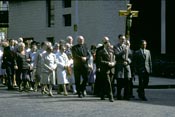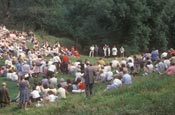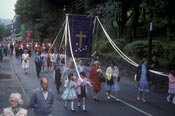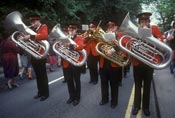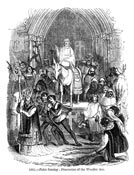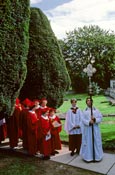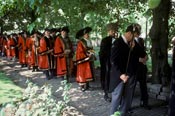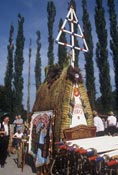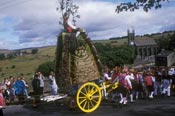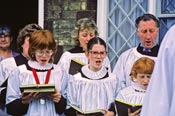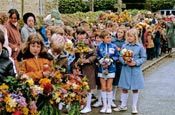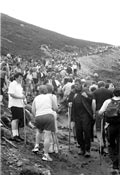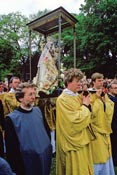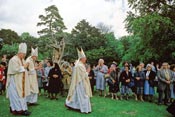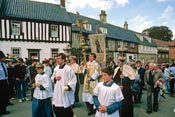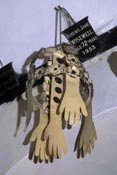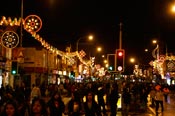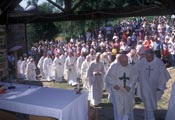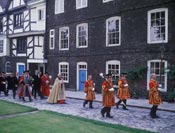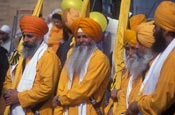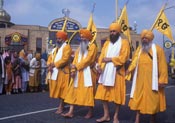
Tyburn Walk, commemorating 105 Catholic martyrs hanged on Tyburn gallows during the Reformation, is a quite testing walk from the Old Bailey, on the site of the notorious Newgate Prison, two and a half miles or so to Marble Arch, where Tyburn Gallows was located for nearly 600 years between 1196 and 1783. This was the last journey of convicted criminals, traitors and religious dissenters. The actual Tyburn Walk only became an event in the Catholic calendar in 1910 but it has survived two world wars only to succumb to mammon since in recent years Oxford Street has become what may well be the busiest shopping street in the entire civilised world, with the possible result that between them the police, Transport for London, shop keepers, shoppers, taxi drivers and even some Catholics themselves will decide that there is enough chaos already in Oxford Street on a springtime Sunday afternoon...
Saddleworth Whit Friday is a huge folkish event almost entirely ignored by folkies. Saddleworth is on the NE corner of Greater Manchester and the west edge of the Peak District, an interesting cluster of former wool villages like Delph, Diggle, Dobcross and Uppermill. On Whit Friday morning each village holds a short open-air service and then marches, with banners, led by their village band, to Uppermill for a mass open-air service, to brass band accompaniment, then they all march home again. But that’s not it; in the afternoon and evening an almighty series of brass band contests is held, at a dozen villages, with over 50 bands, from world famous (Black Dyke, Brighouse & Rastrick, Grimethorp Colliery) to junior village bands, all determined to perform their two set pieces at as many contests as possible. The more they get to the more money they can win. Brass band contests are said to have been invented in the area, in the 1880s, and Saddleworth Whit Friday has grown into what they modestly describe as ‘the Greatest Free Show on Earth’.
The other processions in this section are described in Religious Customs and in individual captions...



